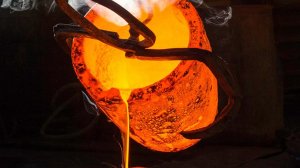Zimbabwe mining potential not fully realised



GROUP FIRST The Shamva mine, near Harare, is the first mine in the Metallon group to employ full-time contract workers
GOING STEADY Gold production at Mazowe mine near Harare has been going steady in 2016
The full potential of gold mining in Zimbabwe has yet to be reached, says gold producer Metallon Corporation, which believes the future of the country’s mining industry is bright.
Metallon has four mines that are producing gold in Zimbabwe; the How mine near Bulawayo, the Shamva and Mazowe mines near Harare and the Redwing mine near Mutare.
The potential to increase gold production by digging deeper is there, says Metallon CEO Ken Mekani, adding that the company wants to increase production fivefold in the next five years from the current 100 000 oz to 500 000 oz.
In the second quarter of this year, Metallon produced 22 565 oz of gold, an increase of 9% over the first quarter. Mekani says, while production has increased, all-in sustaining costs have decreased by 16% between the first two quarters of this year.
Metallon has also started to use contract miners at some of its operations. The Shamva mine is the first Metallon-owned mine to use full-time contract workers. Having started on August 1, the contract miners enable Metallon to increase Shamva’s production and change from having a fixed to variable cost, which can fluctuate according to how many contract workers are being employed, Mekani explains.
The Redwing mine is potentially the next Metallon mine at which contract workers may be employed and, Mekani points out, mine captains have been appointed to work on the further development of Shamva and Redwing.
Several drilling programmes are under way to expand Metallon’s mines, with the company aiming to drill a further 4 000 m to 4 500 m to reach some of the deeper gold veins at each of its gold-producing mines. More than 3 871 m were drilled at the Mazowe mine in the second quarter.
“By undertaking further drilling, we hope to improve the ease of mine planning and increase flexibility and control over the quality of ore being delivered to refineries,” he notes, adding that drilling operations have increased the production capacity Metallon expects to achieve over the next five years.
The company is also investing significantly in advancing the depth of the How mine shaft.
However, there are some challenges that Metallon still has to overcome. Mekani points out that some of the power fluctuations across Zimbabwe have caused certain mines to operate at below-average levels. Metallon lost 112 hours of production, equating to 1 700 oz, owing to power fluctuations in the second quarter.
As a result, Metallon has started to look for solutions to power mines if supply from State-owned power utility Zimbabwe Power Company were to fail. Most of the power supply interruptions are caused by faults in the electricity supply network where Metallon and other mining companies’ operations are located, he explains.
“We are speaking to the Zimbabwe Electricity Supply Authority and it has assured us that the power supply has been stabilised. But, we are still looking to introduce our own plan to ensure secure power supply to our mines,” Mekani notes.
Further impacting on the productivity of the Zimbabwe mining industry are delays in importing mining equipment to the country throughout 2015 and 2016. This is due to delayed payments made by the Zimbabwe government for imported products, Mekani highlights.
However, he points out that Metallon is encouraged that the Reserve Bank of Zimbabwe is prioritising payment for imports to facilitate the importing of goods needed by the mining sector.
Mining is one of the pillars of Zimbabwe’s economy and the industry will continue to grow and expand, Mekani adds. Other businesses in Zimbabwe can also grow on the back of the mining sector’s success.
“If mining houses procure products locally at the right price and quality, it will assist Zimbabwean industries. There is great opportunity for the mining industry to work closely with other industries and, thereby, play a large part in their resuscitation.”
Metallon is Zimbabwe’s largest gold producer and employs about 4 000 people. Mekani concludes that Metallon looks forward to the future while playing a positive role in the country’s economy.
Comments
Press Office
Announcements
What's On
Subscribe to improve your user experience...
Option 1 (equivalent of R125 a month):
Receive a weekly copy of Creamer Media's Engineering News & Mining Weekly magazine
(print copy for those in South Africa and e-magazine for those outside of South Africa)
Receive daily email newsletters
Access to full search results
Access archive of magazine back copies
Access to Projects in Progress
Access to ONE Research Report of your choice in PDF format
Option 2 (equivalent of R375 a month):
All benefits from Option 1
PLUS
Access to Creamer Media's Research Channel Africa for ALL Research Reports, in PDF format, on various industrial and mining sectors
including Electricity; Water; Energy Transition; Hydrogen; Roads, Rail and Ports; Coal; Gold; Platinum; Battery Metals; etc.
Already a subscriber?
Forgotten your password?
Receive weekly copy of Creamer Media's Engineering News & Mining Weekly magazine (print copy for those in South Africa and e-magazine for those outside of South Africa)
➕
Recieve daily email newsletters
➕
Access to full search results
➕
Access archive of magazine back copies
➕
Access to Projects in Progress
➕
Access to ONE Research Report of your choice in PDF format
RESEARCH CHANNEL AFRICA
R4500 (equivalent of R375 a month)
SUBSCRIBEAll benefits from Option 1
➕
Access to Creamer Media's Research Channel Africa for ALL Research Reports on various industrial and mining sectors, in PDF format, including on:
Electricity
➕
Water
➕
Energy Transition
➕
Hydrogen
➕
Roads, Rail and Ports
➕
Coal
➕
Gold
➕
Platinum
➕
Battery Metals
➕
etc.
Receive all benefits from Option 1 or Option 2 delivered to numerous people at your company
➕
Multiple User names and Passwords for simultaneous log-ins
➕
Intranet integration access to all in your organisation



















